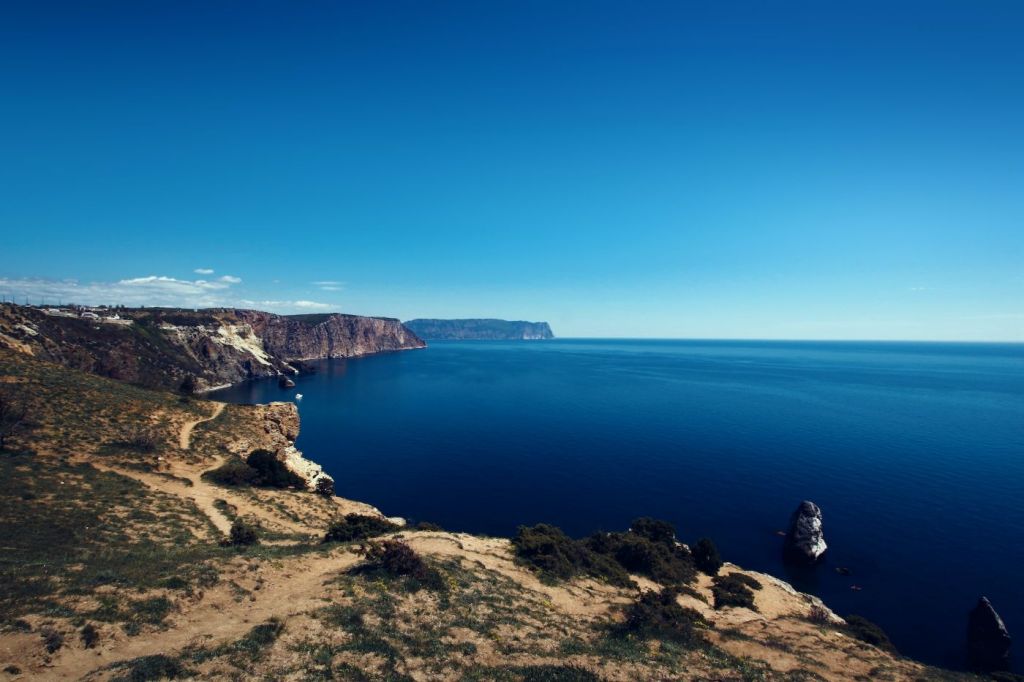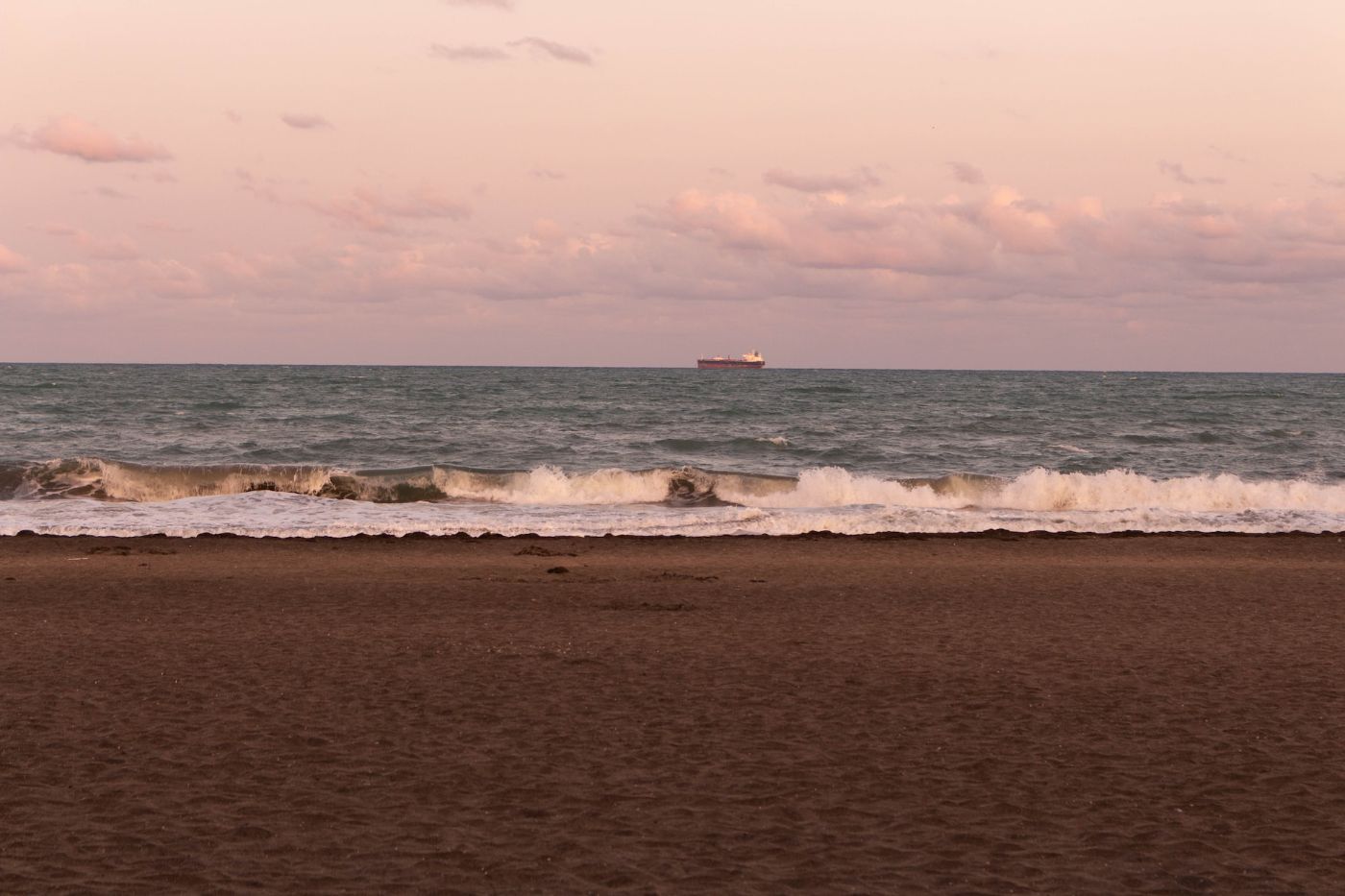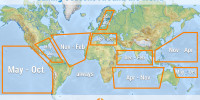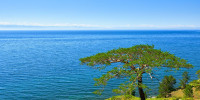Here's Exactly How Ships Enter the Black Sea
The Black Sea is an important waterway connection for trade and transport. However, it can be quite challenging for ships to navigate through its narrow and shallow straits. If you're curious how ships overcome this challenging route, let's find out the exact path they take to enter this sea and tackle what regulations limit ship entry in this region.
Here's the breakdown of the exact route: Ships from the Atlantic Ocean go to the Mediterranean Sea through the Strait of Gibraltar. From the Med, they will navigate through the Dardanelles Strait and then the Bosporus Strait, to enter the Sea of Marmara. Once through the Sea of Marmara, ships finally enter the Black Sea.
Ships entering the Black Sea are regulated by a signed international agreement called the "Montreux Convention". Let's find out how this agreement influences ship passage in this region and its implications.
Summary
- The Bosphorus Strait offers a way toward the Sea of Marmara, which is connected to the Black Sea. This strait has economic significance and is considered to be one of the narrowest straits in the world, with the narrowest point only measuring 700 meters.
- Aside from the Bosphorus Strait, there are two other important pathways that provide entry to the Black Sea- the Dardanelles Strait, which connects the Aegean Sea to the Sea of Marmara, and the Kerch Strait, which connects the Black Sea to the Sea of Azov.
- The Montreux Convention is an international agreement that regulates the passage of vessels through the Bosporus and Dardanelles straits, therefore regulating also the entry of ships between the Black Sea and the Mediterranean Sea.

On this page:
Ships Enter the Black Sea Through This Route
To enter the Black Sea, ships must follow a specific route through various bodies of water. The journey to the Black Sea can be broken down into several subsections:
Ships start their sail from the Atlantic Ocean
Ships entering the Black Sea typically travel from the Atlantic Ocean. The most common route is through the Strait of Gibraltar, which connects the Atlantic Ocean to the Mediterranean Sea. The sail across the Atlantic Ocean takes about 3 weeks.
Ships travel through the Mediterranean Sea
Once in the Mediterranean Sea, ships must navigate through the narrow straits of the Dardanelles and Bosporus to reach the Black Sea. These straits are located between Turkey and Europe and are an important strategic location for maritime trade.

Ships pass through the Dardanelles and Bosporus Strait
The Dardanelles and Bosporus Strait are the only two outlets from the Black Sea, making them crucial for shipping. Ships must navigate through these narrow straits, which are heavily monitored by Turkey, to reach the Black Sea.
The Bosporus Strait, also called as Strait of Istanbul, is approximately 19 miles long and only 700 meters wide at its narrowest point. Ships must navigate through the strait carefully, as it is a busy shipping lane with heavy traffic.
Once they pass through the Bosporus Strait, ships enter the Sea of Marmara, which is connected to the Black Sea by the Dardanelles Strait. From there, they must navigate through the Dardanelles Strait, which is approximately 38 miles long and also controlled by Turkey.
Ships enter the Sea of Marmara
After passing through the Bosporus Strait, ships enter the Sea of Marmara, which is located between Turkey and Europe. The Sea of Marmara is relatively small, but it is an important location for shipping due to its strategic location.
Ships finally enter the Black Sea
Once through the Sea of Marmara, ships finally enter the Black Sea. The Black Sea is bordered by Turkey, Bulgaria, Romania, Ukraine, Russia, and Georgia. It is an important location for trade and is home to several major ports.
Geographical Overview of the Black Sea

Location and basic features of the Black Sea
The Black Sea is located between Europe and Asia and is bordered by six countries: Ukraine, Russia, Georgia, Turkey, Bulgaria, and Romania. It is connected to the Aegean Sea through the Bosporus, the Sea of Marmara, and the Dardanelles, and to the Sea of Azov by the Kerch Strait.
It has a maximum depth of 7,250 ft (2,210 m) and a surface area of 163,000 sq mi (422,000 sq km). The Black Sea basin is surrounded by a range of mountains, including the Pontic Mountains in the south and the Balkan Mountains in the west.
Countries surrounding the Black Sea
The Black Sea is bordered by six countries, each with its own unique culture, history, and language. Ukraine and Russia are located to the north of the Black Sea, while Georgia and Turkey are located to the east and south, respectively.

Bulgaria and Romania are located to the west. The Black Sea has played a significant role in the history and economies of each of these countries, serving as a vital trade route and a strategic location for military operations.
Major ports and cities around the Black Sea
The Black Sea is home to several major ports and cities, including Sinop and Samsun in Turkey, Odessa and Sevastopol in Ukraine, Sochi and Novorossiysk in Russia, Varna in Bulgaria, and Constanta in Romania.
These ports and cities serve as important hubs for trade, tourism, and transportation. The Black Sea includes islands such as the Southern Crimea, which is located in the northwestern part of the sea.
Significant Straits and Their Importance
When it comes to shipping routes, the Black Sea is a vital waterway that connects Europe to Asia. Below, we will discuss three different straits that control the access of ships to the Black Sea.
| Strait | Location | Length | Width | Significance |
|---|---|---|---|---|
| Kerch Strait | Between Crimea and Taman Peninsula, Russia | 45 kilometers | 3,000 - 5,000 meters | Only passage from Black Sea to Sea of Azov |
| Dardanelles | Northwestern Turkey | 61 kilometers | 1,200 - 6,000 meters | Only passage from Aegean Sea to Black Sea |
| Bosphorus | Istanbul, Turkey | 30 kilometers | 700 - 3,300 meters | Connects the Black Sea to the Sea of Marmara |
The Bosporus Strait connects the Black Sea to the Sea of Marmara
The Bosporus Strait is a narrow waterway that connects the Black Sea to the Sea of Marmara, which then leads to the Mediterranean Sea. The Bosphorus Strait is located in Istanbul, Turkey.
The strait is a major shipping route and is used by thousands of vessels every year. It is also an important route for oil tankers, as it provides access to the Black Sea oil fields.
The Dardanelles Strait connects the Aegean Sea to the Sea of Marmara
The Dardanelles Strait is located in northwestern Turkey. It is approximately 61 kilometers long and only 1.2 kilometers wide at its narrowest point.
It is an important shipping route and also a strategic location because it controls access to the Turkish Straits, which are crucial for shipping to the Black Sea.
The Kerch Strait connects the Black Sea to the Sea of Azov
The Kerch Strait is a narrow waterway located between the Crimean Peninsula and Russia's Taman Peninsula. It is the shallowest of the three straits, with a depth of only 18 meters.
The Kerch Strait is significant because it is the only passage from the Black Sea to the Sea of Azov, which is an important waterway for trade and transportation. This strait also provides access to the ports of southern Russia and Ukraine.
The Implications of the Montreux Convention When Entering the Black Sea
The Montreux Convention regarding the regime of the straits is an international agreement signed in 1936 that regulates the passage of vessels through the Bosporus and Dardanelles straits. The convention is particularly important for the Black Sea region, as it regulates the passage of ships between the Black Sea and the Mediterranean Sea.
It provides Turkey with the right to control the straits and restrict the passage of warships belonging to non-Black Sea states. This provision is critical for maintaining the security and stability of the region. It ensures that the Black Sea remains a zone of peace and prevents any outside power from gaining a military foothold in the region.
The convention also regulates the tonnage and number of vessels that can pass through the straits, which can have significant financial implications for shipping companies. However, the convention also ensures that shipping in the region is safe and secure, which is good for maintaining the stability of the Black Sea region.
This regulation also prohibits submarines from passing through the straits unless they are on the surface and flying their national flag. This is critical for maintaining the security of the region, as it prevents submarines from entering the Black Sea undetected.
Did you find the answer to your specific question?
👍 4 👎 3



Leave a comment